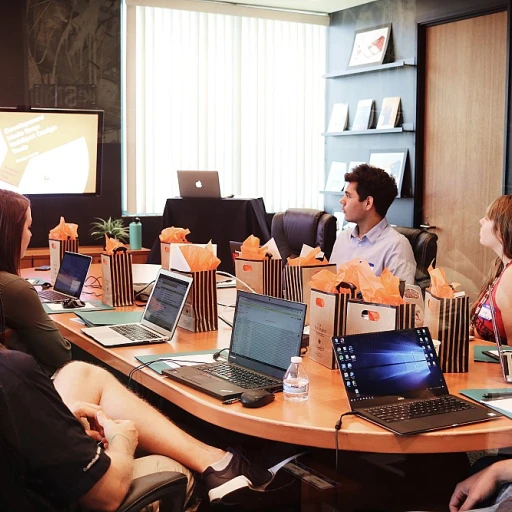
The Role of Compliance Review in Modern Management
The Crucial Role of Evaluations in Management Processes
In the landscape of modern management, the role of compliance reviews is indispensable for organizations striving to maintain transparency, integrity, and adherence to regulatory obligations. These evaluations serve as a cornerstone for ensuring compliance with both internal policies and external regulations that govern business operations. A robust compliance review process can potentially safeguard an organization from the repercussions of non-compliance, including legal penalties and reputational damage. Compliance audits and reviews are crucial for departments like health, human services, and even marketing compliance, where adherence to established standards is imperative. These reviews are not merely a regulatory requirement but are seen as an essential risk management tool designed to identify and mitigate potential vulnerabilities within a company's processes. Public safety and economic development sectors, for example, rely heavily on thorough compliance monitoring to uphold safety standards and promote sustainable growth. Implementing an effective compliance review program requires concerted efforts from various organizational arms, such as the department health, human resources, and legal departments. Compliance monitoring and reporting mechanisms must work in tandem to ensure every review generates actionable insights that can aid in policy adjustments. A key component of the review process is the compliance audit, wherein each department submits a comprehensive compliance report, often compiled into a hard copy and sometimes disseminated as a PDF for broader distribution. The overarching goal of compliance evaluations is to review and enhance operational procedures, ensuring they align with the terms, policies, and state-specific requirements set forth by federal commissions and the attorney general. As organizations aim to tighten their compliance review protocols, many encounter challenges related to resource allocation, inter-departmental coordination, and the ever-evolving nature of compliance mandates. The dedication to continuous improvement in compliance practices shows organizations' commitment to not only meet but exceed the standards set forth for them. This proactive approach not only strengthens their position in their respective sectors but also fosters trust among stakeholders. For those navigating HR management challenges within this context, further resources can be found here.Key Challenges in Implementing Compliance Reviews
Significant Hurdles Faced During Compliance Review Implementation
Organizing an effective compliance review program can be a daunting task, with numerous challenges that can hinder its successful implementation. Businesses often face hard choices that require balancing comprehensive audits with the practical constraints of limited resources. Below, we delve into some key hurdles encountered by management teams:
- Complex Regulatory Environments: Navigating the intricacies of local and federal compliance regulations can be overwhelming. Each business sector, whether public safety or health and human services, demands a detailed understanding of specific terms, policies, and standards.
- Resource Allocation: Establishing a robust compliance department often requires significant investments in human resources and technology. Allocating sufficient resources to ensure compliance while not detracting from other vital business areas is a common struggle.
- Internal Resistance: Compliance reviews might meet resistance from employees wary of audits and reviews. Overcoming this resistance and fostering organizational support for compliance initiatives is critical to success.
- Data Management: Collecting and managing data for compliance reviews is challenging. Converting hard copy documents into a digital format, often a PDF, and ensuring the accuracy and state of the information can be cumbersome.
These challenges underscore the need for businesses to approach compliance with a strategic mindset. A well-planned compliance review process not only aligns with regulatory requirements but also integrates risk management and marketing compliance strategies. For more insights into addressing such challenges, you can read about navigating HR management challenges.
Best Practices for Effective Compliance Reviews
Implementing Strategies for Seamless Compliance Procedures
To ensure compliance within a business, organizations must adopt best practices that foster efficient and effective compliance reviews. Here are some strategies that can contribute to successful implementation:
- Clear Terms and Policies: Establish clear and concise compliance terms and policies that every department within the organization must follow. This will help in maintaining consistency during each audit and review process, minimizing discrepancies.
- Regular Training and Communication: Conduct regular training sessions for employees across management levels to enhance their understanding of compliance requirements. Encouraging open communication helps human resources and other departments stay updated with the latest compliance regulations.
- Integrated Risk Management: Incorporate risk management practices to proactively identify potential compliance challenges. This can serve as a preventative approach, reducing non-compliance risks before they escalate.
- Documentation and Reporting: Maintain comprehensive documentation and make use of compliance audit report templates (e.g. PDFs, hard copies) for better record-keeping. Regular documentation helps in conducting thorough reviews and provides a reliable basis for future audits.
- Third-Party Assistance: Sometimes, engaging third-party services can provide an objective perspective during compliance reviews. They can offer expertise in areas such as marketing compliance and public safety, ensuring adherence to federal standards.
- Compliance Monitoring Tools: Leverage technological tools for compliance monitoring, which streamline processes and improve efficiency. For example, adopting software solutions for workforce management can optimize review processes and enhance program effectiveness. Learn more about optimizing workforce efficiency with Medex Crew Scheduling.
By following these best practices, businesses can not only ensure compliance but also facilitate a smoother and more efficient compliance review process, aiding in economic development and safeguarding human services.
Technological Tools for Streamlining Compliance Processes
Embracing Technology for Efficient Processes
In the evolving landscape of compliance management, adopting technological tools has become crucial for streamlining compliance processes. As businesses face increased scrutiny from compliance reviews and audits, integrating modern solutions can ensure compliance while enhancing efficiency. One of the significant technological advancements is the digitization of compliance review reports. Transitioning from hard copy documentation to digital formats, like PDFs, allows for easier access, sharing, and archiving of critical information across different departments, such as human resources and public safety. This shift not only reduces manual errors but also accelerates the review process, enabling quicker responses to compliance federal and state inquiries. Moreover, compliance management platforms offer comprehensive solutions for monitoring and automating compliance tasks. These platforms, often integrated with risk management services, monitor adherence to terms and policies, ensuring that every department, from marketing compliance to economic development, is aligned with the organization's objectives. The ability to customize dashboards and reports enables managers to oversee compliance reviews effectively, ensuring the seamless release of compliance audit findings. Furthermore, leveraging artificial intelligence (AI) and machine learning (ML) has introduced predictive analytics into compliance monitoring. These technologies assist in identifying potential compliance risks before they escalate, allowing for proactive measures to be implemented. By analyzing trends and patterns, AI-driven tools provide invaluable insights, significantly enhancing an organization's ability to ensure compliance while reducing the reliance on third-party services. However, with technology comes the need for regular updates and maintenance. Businesses must collaborate with their IT departments to ensure that the technological tools used for compliance are up-to-date and secure. Regular training sessions for staff, particularly in departments like health and human services, are essential to make the most of these tools. Embracing technology is not just about simplifying the review program or processes; it's about enhancing the overall state of compliance within an organization. As businesses continue to navigate the complexities of compliance, technological tools will remain indispensable allies in fostering an environment of continued growth and adherence to regulatory standards.Case Studies: Successful Compliance Review Implementations
Showcasing Effective Compliance Review Implementations
The implementation of compliance reviews can make or break the management landscape in any organization. By examining case studies of successful compliance review integrations, businesses can gain invaluable insights. Consider a large health department that effectively implemented a comprehensive compliance review process. This initiative was part of an entire department health program aimed at ensuring compliance with health and human services regulations. Their approach included regular compliance audits and rigorous compliance monitoring, tailored to meet state and federal requirements. They faced numerous challenges, such as navigating hard copy records and integrating various compliance review processes. Yet, by adopting innovative technological tools, they streamlined their review process and leveraged both digital and human resources effectively. This approach led to improved compliance reports, increased public safety, and a strengthened risk management framework. Furthermore, a business in the economic development sector improved their management compliance through marketing compliance reviews. By frequently releasing compliance reports and leveraging third-party compliance services, they ensured alignment with relevant commission standards. As a result, they were able to boost trust among stakeholders while reducing compliance risks. These examples underscore the significance of a well-structured compliance review program within organizations. Whether improving the terms and policies of a company’s human resources or aligning with the attorney general’s standards, effective compliance reviews facilitate a robust compliance culture. Understanding these successful implementations allows businesses to tailor their own compliance strategies for optimal results.Future Trends in Compliance Review and Management
Future Directions in Compliance Review
The landscape of compliance review is continuously evolving, with several trends shaping the future of management. Organizations are increasingly focusing on enhancing their compliance processes to not only meet legal obligations but to also streamline overall business operations.- Integration of Advanced Technologies: The advent of AI and machine learning will significantly impact how compliance audits and reviews are conducted. These technologies can help automate the review process, reducing the burden on human resources and allowing for more efficient compliance monitoring. This technological shift is expected to drive a higher number of real-time analyses, with tools quickly identifying potential risks and discrepancies in compliance state.
- Emphasis on Data-Driven Compliance: With the increasing importance of data in decision-making, there is a rise in data-driven compliance programs. Compliance departments will likely prioritize services that provide comprehensive compliance audit reports, available in both hard copy and pdf formats, to track and monitor compliance health.
- Regulatory Landscape Evolution: As governments and regulatory bodies, such as the attorney general and commissions on public safety, update their terms and policies, the need for dynamic compliance programs that can easily adapt to new rules becomes crucial. This calls for robust risk management strategies that ensure compliance with ever-changing federal and local regulations.
- Growing Importance of Third-party Reviews: As third-party collaborations grow, the need for external compliance reviews becomes more vital. Organizations will increasingly rely on third-party reviews to validate their compliance standings and enhance their credibility within the industry.
- Sector-specific Trends: Different sectors, including health, economic development, and marketing compliance, will see tailored compliance solutions to cater to their unique regulatory needs. Departments focusing on health human services, for instance, may require customized compliance monitoring tools to ensure they meet intricate health guidelines effectively.












